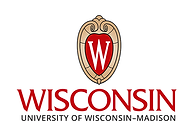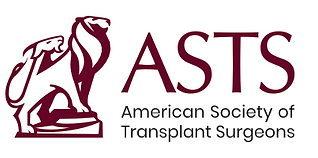
Publications
Diminished Immune Cell Adhesion in Hypoimmune ICAM-1 Knockout Pluripotent Stem Cells
Hypoimmune gene-edited human pluripotent stem cells (hPSCs), which evade immune rejection, show promise for developing reparative cellular therapies. By targeting the adhesion molecule ICAM-1, which plays critical roles in adaptive and innate immune responses, researchers found that blocking or knocking out ICAM-1 in hPSC-derived cardiovascular therapies significantly reduced immune cell binding and T cell proliferation, enhancing graft retention and protection in humanized mice models and improving the overall hypoimmune capacity of the cells.
Small-diameter artery grafts engineered from
pluripotent stem cells maintain 100% patency in an
allogeneic rhesus macaque model
Autologous vascular grafts, used for small-diameter revascularizations, face challenges such as invasive harvesting, limited availability, and variable quality. In this collaboration with lead author John Maufort at the Wisconsin National Primate Research Center, the research team developed a 3-mm-diameter artery graft using arterial endothelial cells (AECs) derived from pluripotent stem cells (PSCs). The AECs were seeded on a modified scaffold made from expanded polytetrafluoroethylene (ePTFE). Wild-type (WT) and first-generation hypoimmune (MHC knockout) cell grafts were transplanted in a rhesus arterial interposition grafting model. WT grafts showed 100% patency for 6 months, with repopulation of the endothelium by host cells, offering a promising solution for allogeneic arterial revascularization.
Efforts to isolate four simarteriviruses using various cell lines and models resulted in successful isolation, though no single method worked for all viruses. These approaches will facilitate further studies on virus-host interactions, zoonotic risk, and development of medical countermeasures.
This publication covers previous work in stem cell immunology and highlights the progress made since then. It discusses subsequent research in pluripotent stem cell (PSC) therapies and introduces future research endeavors involving PSCs.
The NeoThy humanized mouse model uses nonfetal tissue sources, specifically umbilical cord blood and neonatal thymus tissue from cardiac surgeries, to generate a human immune system in immune-deficient mice. This protocol allows for the preparation of over 1,000 mice from a single thymus donor and supports various research applications including immunology, virology, and oncology studies.
Researchers used CRISPR-Cas9 to integrate an anti-GD2 CAR into the AAVS1 locus of human pluripotent stem cells (hPSCs). They developed a serum- and feeder-free protocol to create CAR macrophages (CAR-Ms) via arterial endothelial-to-hematopoietic transition. These CAR-Ms demonstrated potent cytotoxicity against GD2-expressing neuroblastoma and melanoma cells in vitro and effectively targeted neuroblastoma in vivo, offering a new platform for scalable production of CAR-Ms for antitumor immunotherapy.
Genome editing is transforming regenerative medicine by enabling the creation of immune-evasive pluripotent stem cell-derived somatic cells for transplantation. This approach, particularly in generating pluripotent stem cell-derived islets (SCDI), focuses on modifying immunogenicity to enhance cell survival in allogeneic and autoimmune contexts, with significant research underway to optimize these therapies for clinical application.
Researchers developed a primatized mouse model by engrafting rhesus macaque hematopoietic stem and progenitor cells (HSPCs) into immune-deficient mice with human-like cytokines, achieving robust multilineage lymphohematopoietic engraftment. This model mimics the immune system of fetal monkeys and offers a valuable tool for studying nonhuman primate hematopoiesis, immune development, and functional immunology.
Graft-vs-host disease (GVHD) is the leading cause of non-relapse mortality, following allogeneic hematopoietic stem cell transplantation (HSCT), despite improvements in conditioning regimens, HLA genotyping, and immune suppression. Xenogeneic HSCT models, which involve transplanting human T cells into immunodeficient mice, have provided a valuable tool for studying human T cell responses and GVHD pathogenesis. This offers insights that bridge the gap between murine studies and clinical application, thus aiding in the development of new GVHD prophylaxis therapies.
Evolution of ischemia and neovascularization in a murine model of full thickness human wound healing
This study characterizes the healing process of grafted full-thickness human skin in a murine model, showing significant epidermolysis and neovascularization over a 12-week period. The findings highlight that epidermal regeneration is completed by week 12, despite early graft loss driven by hypoxia, providing a valuable timeline for using human skin grafts to study wound healing mechanisms in an ischemic environment.
As pluripotent stem cell (PSC)-derived therapies rapidly progress to clinical trials, understanding the human immune response to these treatments is crucial because a robust immune reaction could negate their effectiveness even in immunosuppressed patients. Humanized mouse models, which are mice engrafted with functional human immune cells, serve as a key tool for studying PSC immunogenicity and evaluating the adaptive immune response to these therapies, offering valuable insights for researchers in regenerative medicine.
This discusses exhaustion and senescence marker profiles on human T cells in BRGSF-A2 humanized mice and how they resemble those in human samples. It describes how this model fits into the humanized-mouse research field.
This study developed a limb-sparing, nonhuman primate model to investigate arterial allotransplantation without immunosuppression, comparing the outcomes of major histocompatibility complex (MHC) matched and mismatched arterial grafts. The results showed that partially haplomatched allografts performed as well as autologous grafts, with minimal long-term immune response even in completely MHC mismatched allografts. Researchers also found that arterial grafts were largely replaced by recipient cells over time. These findings suggest that induced pluripotent stem cell-derived tissue-engineered blood vessels could become promising, customizable grafts for surgical use in cardiac, vascular, and plastic surgery.
This study investigated the priming of early cardiac progenitor cells with polyinosinic-polycytidylic acid (pIC) to accelerate the maturation of human pluripotent stem cell-derived cardiomyocytes (hPSC-CMs). pIC priming enhanced the maturity of hPSC-CMs, resulting in increased cell size, contractility, electrical activity, oxidative metabolism, and sarcomeric structure. This was found to modulate early Notch signaling and epigenetic marks in cardiac progenitor cells, ultimately improving the formation of hPSC-CM grafts in vivo.
This study utilized a high-throughput differentiation screen to identify RepSox as a factor that promotes the differentiation of more contractile smooth muscle cells (SMCs) by enhancing NOTCH signaling. This is compared to previously used factors PDGF-BB and TGF-β1, which induce intimal hyperplasia. Additionally, RepSox inhibited the contractile to synthetic phenotypic switching of SMCs, reducing intimal hyperplasia in a rat balloon injury model. It offers a potential strategy for generating contractile SMCs for artificial blood vessels and identifying drugs that inhibit intimal hyperplasia by driving contractile differentiation.
Researchers developed a novel decellularization method for human pancreas tissue, producing an acellular 3D biological scaffold (hP-ECM) and hydrogel (hP-HG) that are suitable for tissue culture, transplantation, and proteomic applications. The inclusion of a homogenization step significantly improved lipid removal and gelation capability, resulting in an ECM hydrogel that supports various cell types and islet-like tissues, with a comprehensive list of 120 proteins identified within the human pancreatic matrisome.
The NeoThy humanized mouse model, created using cryopreserved neonatal thymus and umbilical cord blood hematopoietic stem cells (HSCs), offers an alternative to conventional models that use fetal tissues. This model can produce significantly more mice per donor and has comparable frequencies of engrafted human immune cells, with effective T cell function, making it advantageous for studying induced pluripotent stem cell immunogenicity without the need for fetal tissue.
This study reports the derivation of arterial endothelial cells from human pluripotent stem cells, exhibiting arterial-specific functions in vitro and in vivo. Using single-cell RNA sequencing and a dual reporter system, the researchers identified factors regulating arterial endothelial cell specification and developed a xeno-free protocol that consistently produced arterial endothelial cells with appropriate gene expression, oxygen consumption, nitric oxide production, shear stress responses, and TNFα-induced leukocyte adhesion. This demonstrates potential applications in disease modeling and regenerative medicine.
Th17 Responses to Collagen Type V, kα1-Tubulin, and Vimentin Are Present Early in Human Development and Persist Throughout Life
Th17-dependent autoimmune responses following heart or lung transplantation are linked to fibro-obliterative chronic rejection and involve different self-antigens than typical autoimmune diseases. This study found Th17 cells specific for collagen type V, kα1-tubulin, and vimentin in healthy individuals. This suggests that autoimmunity post-transplant may stem from dysregulation of an intrinsic Th17 response mechanism that is MHC class II restricted and crucial for airway and vascular homeostasis.
The recent development of the "NSGW" mouse model marks a significant advancement in human xenotransplantation studies by eliminating the need for myeloablative irradiation. Thus, associated hematopoietic, gastrointestinal, and neurological side effects are avoided. This model, along with other transgenic and mutant mice, enhances chimerism and expands research possibilities for investigators lacking access to radiation sources.
Induced pluripotent stem cells (iPSCs) are a promising source for regenerative medicine therapies, but their clinical use faces challenges. These include immunologic barriers, differentiation potential, and genetic stability. While autologous iPSCs offer immunological benefits, further research is needed to evaluate the immunogenicity of various iPSC-derived cell types and develop methods to mitigate rejection.
Patients with advanced vocal fold (VF) fibrosis or tissue loss have limited treatment options. Researchers have developed a bioengineered VF mucosa using cocultured primary human VF fibroblasts and epithelial cells, which shows morphological features similar to native tissue and proteomic evidence of mucosal morphogenesis and emerging extracellular matrix.
In this study, researchers developed the NBSGW mouse model by crossing the NSG strain with the C57BL/6.KitW41 strain. This enables human hematopoietic stem cell (HSC) engraftment without irradiation. This model achieved high levels of human cell chimerism in the marrow, peripheral blood, and spleen, comparable to those seen in irradiated NSG mice. It enables HSC engraftment studies without the adverse effects of irradiation.
Researchers generated induced pluripotent stem cells (iPSCs) from Epstein-Barr virus immortalized lymphoblastoid B-cell lines (LCLs). This was achieved with a feeder-free episomal method with a combination of transcription factors and small molecules. These LCL-derived iPSCs retained normal karyotype, pluripotency marker expression, donor identity, and were free of viral elements. This demonstrates their potential for differentiating into various cell lineages and serving as an unlimited source for patient-specific iPSCs in regenerative medicine.
Researchers have developed induced pluripotent stem cells (iPSCs) from T lymphocytes derived from small volumes of non-mobilized peripheral blood, offering a clinically advantageous method. These T-cell derived iPSCs (TiPS) maintain a normal karyotype, donor genetic identity, and pluripotent characteristics. This includes the ability to differentiate into neurons, cardiomyocytes, and hematopoietic progenitor cells, while also retaining their T-cell receptor gene rearrangements. These findings are useful for tracking and T-cell development studies.
This study aimed to assess differences in T cell responses to the carcinoembryonic antigen (CEA)-derived peptide CAP1 and its heteroclitic variant CAP1-6D, noting variability in immunogenicity among individuals, potentially impacting CEA-directed immunotherapy. The findings revealed that individual T cell responses to these peptides were heterogeneous, with many T cells recognizing only one peptide, and overall T cell avidity and specificity were moderate to low. This suggests that future treatment strategies might need to focus on altering or expanding the T cell repertoire against CEA for improved efficacy.
For a complete list of Brown Lab publications, visit: Matthew Brown's Bibliography
Funding & Collaborators
A special thank you to all those who have supported our work
![Transplant_color_flush[63].png](https://static.wixstatic.com/media/838616_7ef831b9599c4b79b84819614cab6852~mv2.png/v1/fill/w_244,h_76,al_c,q_85,usm_0.66_1.00_0.01,enc_avif,quality_auto/Transplant_color_flush%5B63%5D.png)






